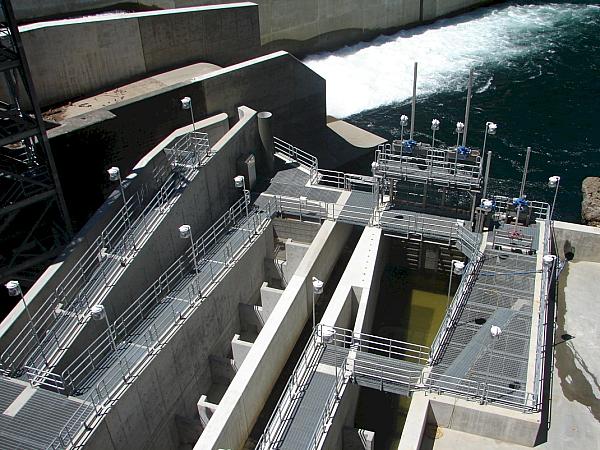Adhesion and Embrittlement Testing During Inspection

How often do galvanizers need to conduct adhesion and embrittlement testing during inspection of galvanized steel?
After the galvanizing process has been completed, the final step before delivering the steel to the customer is to inspect it to ensure compliance with ASTM specifications.
Common inspection items include checking for edge tears or spikes that could be a safety hazard, taking coating thickness measurements, and ensuring there are no bare spots, blisters, flux deposits, gross dross inclusions, or heavy deposits of zinc that will interfere with the intended use of the product. Less commonly conducted inspection practices include adhesion and embrittlement testing, but under some circumstances they are necessary.
The hot-dip galvanized coating on a steel bar must withstand bending without flaking or peeling when the bending test is preformed in accordance with the procedure in A143/A143M.
Rebar is commonly bent prior to the hot-dip galvanizing process. Steel reinforcing bars bent cold prior to hot-dip galvanizing should be fabricated to a bend diameter equal to or greater than the specified value in A767/A767M.
ASTM A123/A123M
Per ASTM A123/A123M, visual inspection without magnification of the galvanized coating is sufficient for verifying compliance with adhesion and embrittlement requirements. During the visual inspection, if adhesion concerns are suspected (such as peeling or flaking of the galvanized coating), then adhesion testing using the stout knife method shall be conducted. Embrittlement testing is required only when there is strong evidence of embrittlement and shall be conducted per the requirements of ASTM A143/A143M.
ASTM A123/A123M specifically states specifying tests for adhesion and embrittlement shall be subject to mutual agreement between the galvanizer and purchaser.

ASTM A153/A153M
Per ASTM A153/A153M, visual inspection without magnification is adequate for the finish and appearance of the galvanized coating. Finish and appearance requirements are discussed in Section 5 of the specification. Two items discussed in Section 5 include adherence of the galvanized coating to the base steel and factors that can cause embrittlement of the base steel.
If the visual inspection of the galvanized coating reveals a potential adherence issue (peeling or flaking of the galvanized coating), the stout knife test shall be used to test adherence of the coating.
Section 7 of A153/A153M states hardware susceptible to embrittlement shall be tested in accordance with ASTM A143/A143M per the agreement between the galvanizer and purchaser.
Additional Thoughts
A thorough inspection of the galvanized coating is important not only to ensure the customer receives a high-quality product but also because it allows the galvanizer to address any potential concerns at the galvanizing plant, which is more efficient and economical than dealing with chargebacks or having to pay for steel to be reshipped for rework.
Because both ASTM A123/A123M and A153/A153M state testing for adhesion and embrittlement shall be agreed upon by both the galvanizer and purchaser, the best time to discuss these tests is when the customer places their order. If a customer requires adhesion and/or embrittlement testing, a good place to start concerning the number of items to be tested is the sampling recommendations listed in Section 7 of ASTM A123/A123M and Section 6 of A153/A153M.
Additionally, including stipulations for adhesion and embrittlement testing in purchase order agreements is a good business practice because it eliminates confusion on how often these tests shall be conducted or even if they shall be conducted. This goes a long way to preventing disagreements such as customers who expect every item galvanized to be tested for embrittlement and/or adhesion (stout knife testing).
Both A123/A123M and A153/A153M give explicit instructions on conducting stout knife testing. This ensures the test is done without whittling, gouging, or applying excessive force to the galvanized coating. It also ensures testing is not conducted at edges or corners, which are points of lowest coating adhesion.
It is also important to make clear up front embrittlement testing often tends to be a destructive test. For additional information on conducting embrittlement testing see ASTM A143/A143M.
© 2025 American Galvanizers Association. The material provided herein has been developed to provide accurate and authoritative information about after-fabrication hot-dip galvanized steel. This material provides general information only and is not intended as a substitute for competent professional examination and verification as to suitability and applicability. The information provided herein is not intended as a representation or warranty on the part of the AGA. Anyone making use of this information assumes all liability arising from such use.

